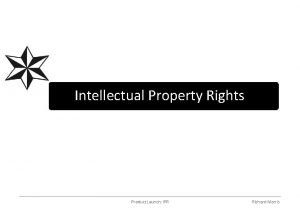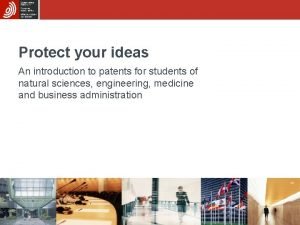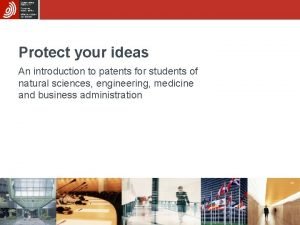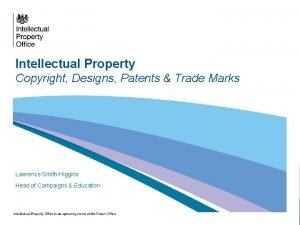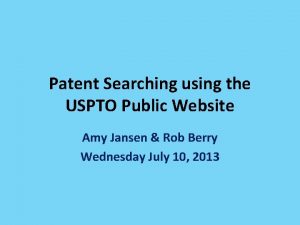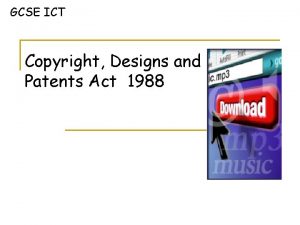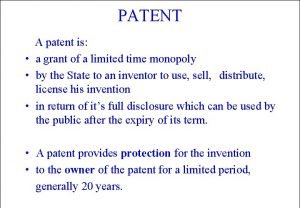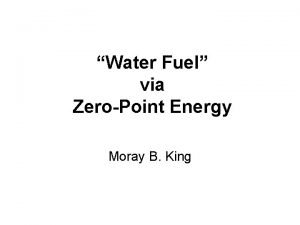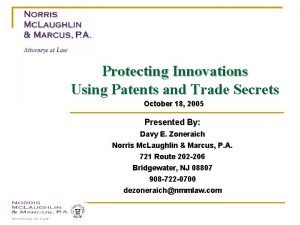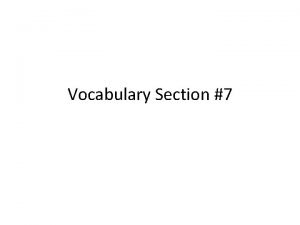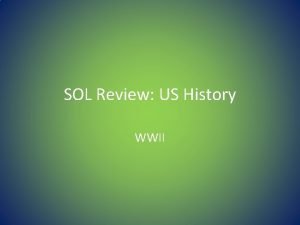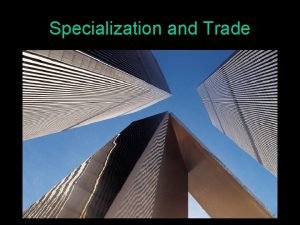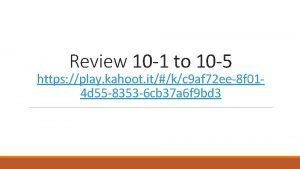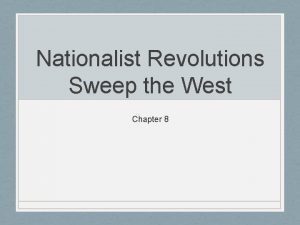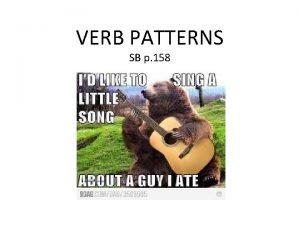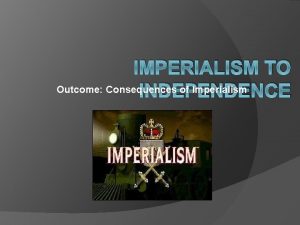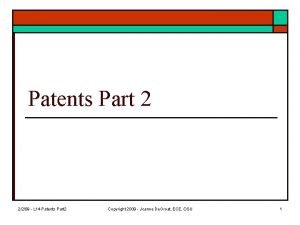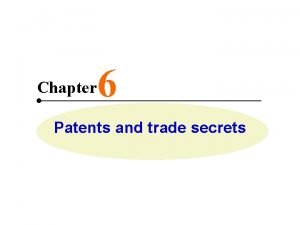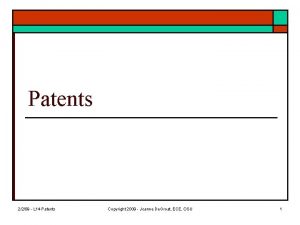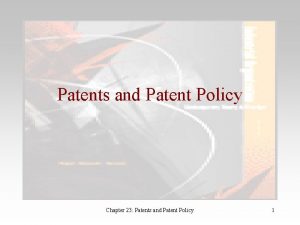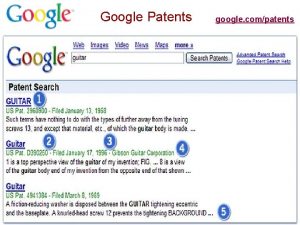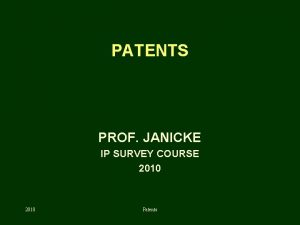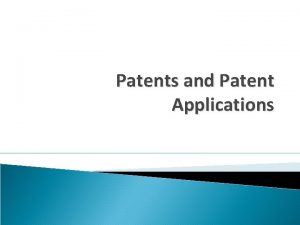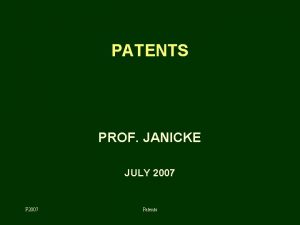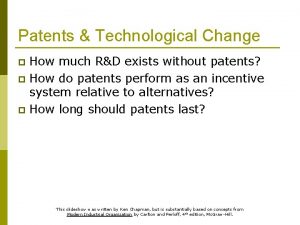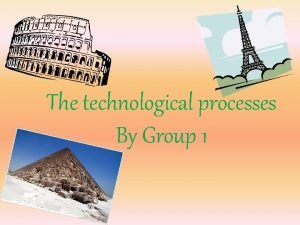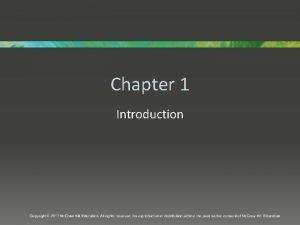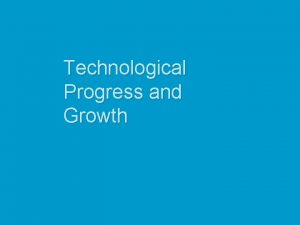Lecture 5 Patents Purpose of Patents Encourage technological



















- Slides: 19

Lecture 5: Patents

Purpose of Patents • Encourage technological innovation by rewarding inventors • Allow society to benefit (build structural capital!) • Natural justice theory: “Justice gives every man a title to the product of his honest industry. ” John Locke, Two Treatises on Civil Government (1690)

Rewarding Inventors • Pay them – Buy out invention – Pay royalties (Soviet Union) • Allow them freedom to exploit the invention • In the U. S. , confer a monopoly • Compact theory: – You tell us all about the invention – We protect your ability to make money

What is Patentable? “Whoever invents or discovers any new and useful 1. process, 2. machine, 3. manufacture, or 4. composition of matter, or 5. any new and useful improvement thereof, may obtain a patent therefor …” 35 U. S. C. § 101 If none of these 5, it’s not patentable.

Extra Requirement of Non-Obviousness “A patent may not be obtained … if the. . . subject matter as a whole would have been obvious at the time the invention was made to a person having ordinary skill in the art to which said subject matter pertains. ” 35 U. S. C. § 103

What’s Obvious? • Conventional transformations and operations on objects: • “Negative rules of invention” – changing size – substituting a new material – making an apparatus portable – new use for old apparatus – omitting parts, moving parts around • Combining references – Need “suggestion to combine”

Requirements for Patentability • Statutory subject matter (one of the five types of invention) • New • Useful (that is, it works) • Non-obvious

What is Not Patentable? • • • Unimplemented ideas Laws of nature, natural phenomena, substances Printed matter Mathematical formulas Purely mental steps FORMERLY, “methods of doing business”

Methods of Doing Business • The term ‘business method’ means— • (1) a method of— (A) administering, managing, or otherwise operating an enterprise or organization, including a technique used in doing or conducting business; or • (B) processing financial data; • (2) any technique used in athletics, instruction, or personal skills; and • (3) any computer-assisted implementation of a method described in paragraph (1) or a technique described in paragraph (2). 35 U. S. C. 100

Methods of Doing Business • A “method of doing business” is patentable if it is one of the five types of invention: process, machine, manufacture, composition of matter, improvement • State Street Bank & Trust Co. v. Signature Financial Group, Inc. , 149 F. 3 d 1368 (Fed. Cir. 1998) (re patent no. 5, 193, 056) • “As an alternative ground for invalidating the '056 patent under § 101, the court relied on the judicially-created, so-called ‘business method’ exception to statutory subject matter. We take this opportunity to lay this ill-conceived exception to rest. ” • “The business method exception has never been invoked by this court … to deem an invention unpatentable. ”

The State Street Patent, No. 5, 193, 056 1. A data processing system for managing a financial services configuration of a portfolio established as a partnership, each partner being one of a plurality of funds, comprising: (a) computer processor means for processing data; (b) storage means for storing data on a storage medium; (c) first means for initializing the storage medium; (d) second means for processing data regarding assets in the portfolio and each of the funds from a previous day and data regarding increases or decreases in each of the funds, assets and for allocating the percentage share that each fund holds in the portfolio; (e) third means for processing data regarding daily incremental income, expenses, and net realized gain or loss for the portfolio and for allocating such data among each fund; (f) fourth means for processing data regarding daily net unrealized gain or loss for the portfolio and for allocating such data among each fund; and (g) fifth means for processing data regarding aggregate year-end income, expenses, and capital gain or loss for the portfolio and each of the funds.

What is a Patent? “Every patent shall contain … a grant to the patentee … of the right to exclude others from • making, • using, • offering for sale, or selling the invention throughout the United States or • importing the invention into the United States. ” 35 U. S. C. § 154 (Term: 20 years from application date)

Who Owns a Patent? This is three separate questions: who owns 1. Patent rights? 2. Patent application? 3. Issued patent? • Who is an inventor? – One who participates in the “complete conception” of one claim of the invention – Each can exploit the invention without “duty to account”

Who Owns a Patent? • Employer – Non-inventive employee • Employer may have a “shop right” – Specifically inventive • Employer owns specific invention – Generally inventive • Employer owns all inventions pertinent to his business

The Patent Process • Search, e. g. USPTO • Application – Specification (+ “best mode”) – Claims • Examination – Comparison with “prior art” • Amendment – But no “new matter” • Issuance (term = 20 years from filing date) • Maintenance Fees • Enforcement

Patent Applications • Pursuing a patent application is called “prosecution” • Prosecution is a negotiation between PTO and applicant – clarity of specification, effect of prior art, wording of claims • Usually takes 9 months to 2 years • Possibility of “interference” (two people invent the same thing) – first to invent wins if “diligent” • “Absolute” novelty, provisional applications

U. S. Patent System U. S. SUPREME COURT PATENT SYSTEM IS FEDERAL ONLY APPEAL BY PETITION PATENT APPLICATIONS Can declare patents invalid COURT OF APPEALS FOR THE FEDERAL CIRCUIT APPEAL AS OF RIGHT (A Federal Executive Branch Agency) (Judicial Branch) U. S. DISTRICT COURTS (91) U. S. PATENT AND TRADEMARK OFFICE BOARD OF PATENT APPEALS AND INTERFERENCES PATENT EXAMINERS (2000) PATENT INFRINGEMENT CASES

2001 Top 10 U. S. Patentees TOTAL PATENTS ISSUED > 169, 000 – MORE THAN 3250/WEEK 2001 Stats 1. IBM (3411) (1, 2886) 2. NEC (1953) (2, 2021) 3. Canon (1877) (3, 1890) 4. Micron (1643) (7, 1304) 5. Samsung (1450) (4, 1441) 6. Matsushita (1440) (11, 1137) 7. Sony (1363)(6, 1385) 8. Hitachi (1271) (13, 1036) 9. Mitsubishi (1184) (14, 1010) 10. Fujitsu (1166) (10, 1147) Next U. S. company: 12. Lucent (1119) SOURCE: USPTO. GOV 46 -840 ECOMMERCE LAW AND REGULATION SPRING 2002 COPYRIGHT © 2002 MICHAEL I. SHAMOS

Q&A 46 -840 ECOMMERCE LAW AND REGULATION SPRING 2002 COPYRIGHT © 2002 MICHAEL I. SHAMOS
 01:640:244 lecture notes - lecture 15: plat, idah, farad
01:640:244 lecture notes - lecture 15: plat, idah, farad Patents
Patents Advantages and disadvantages of patents
Advantages and disadvantages of patents Advantages and disadvantages of patents
Advantages and disadvantages of patents What is the copyright designs and patents act 1988
What is the copyright designs and patents act 1988 Different types of patents
Different types of patents Design and patents act 1988
Design and patents act 1988 Insecticide act
Insecticide act Stan meyer murdered
Stan meyer murdered Definition of trade secrets
Definition of trade secrets Pedestrian adj
Pedestrian adj This world war 2 cartoon was used to encourage americans to
This world war 2 cartoon was used to encourage americans to How does specialization encourage trade
How does specialization encourage trade Encourage past participle
Encourage past participle Leader development marines
Leader development marines Ways to encourage reading at home
Ways to encourage reading at home Friends encourage one another
Friends encourage one another Europe faces revolutions
Europe faces revolutions Advice verb pattern
Advice verb pattern Why did gandhi encourage indians to weave their own cloth?
Why did gandhi encourage indians to weave their own cloth?

